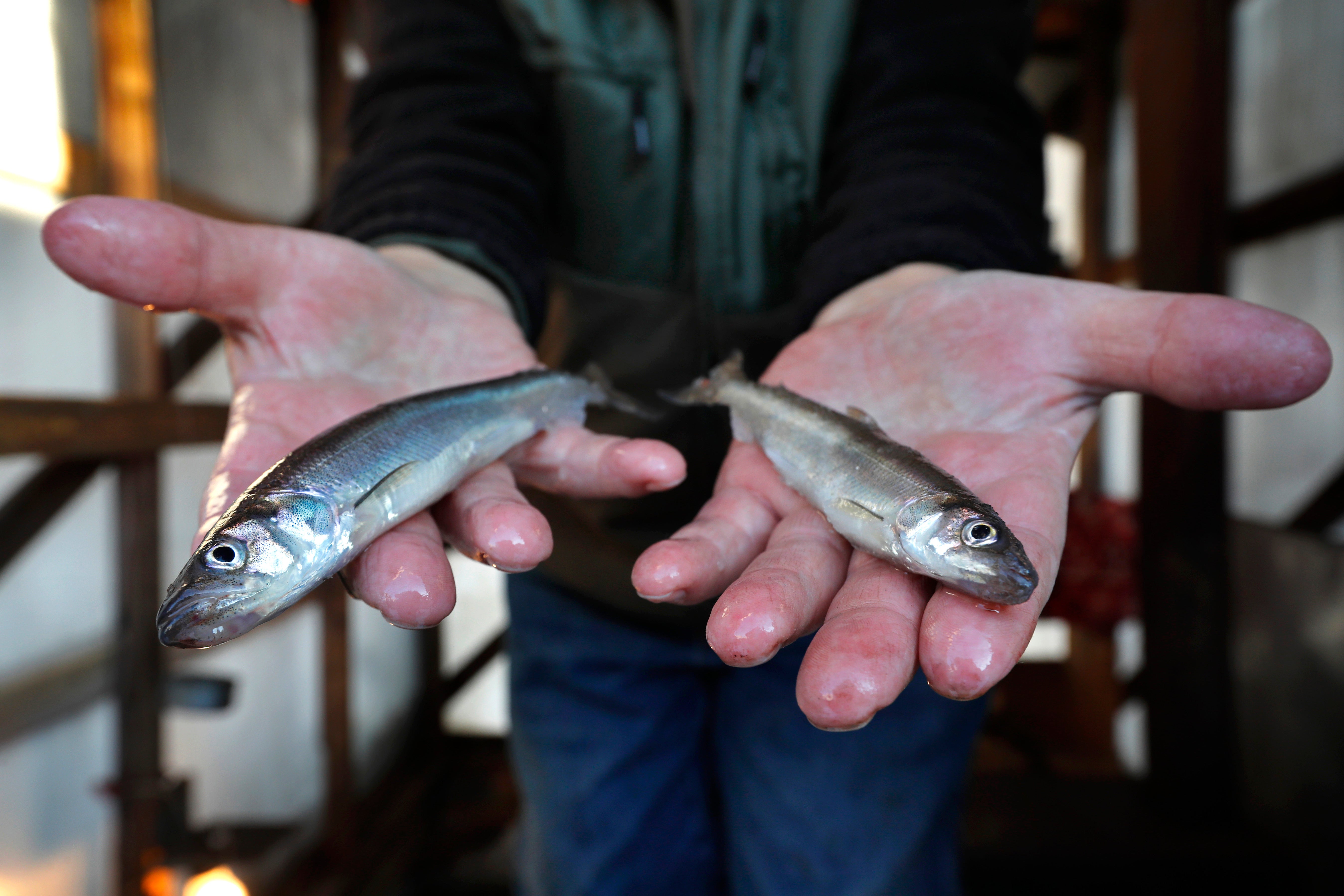Late ice cramps anglers' appetite, research of crucial fish
A lack of ice in cold weather states this year has made it difficult for scientists to study the population of an ecologically important fish

Your support helps us to tell the story
From reproductive rights to climate change to Big Tech, The Independent is on the ground when the story is developing. Whether it's investigating the financials of Elon Musk's pro-Trump PAC or producing our latest documentary, 'The A Word', which shines a light on the American women fighting for reproductive rights, we know how important it is to parse out the facts from the messaging.
At such a critical moment in US history, we need reporters on the ground. Your donation allows us to keep sending journalists to speak to both sides of the story.
The Independent is trusted by Americans across the entire political spectrum. And unlike many other quality news outlets, we choose not to lock Americans out of our reporting and analysis with paywalls. We believe quality journalism should be available to everyone, paid for by those who can afford it.
Your support makes all the difference.A lack of ice in cold weather states this year has made it difficult for scientists to study the population of an ecologically important fish.
Rainbow smelts, which are small fish that are very popular with ice anglers, have been a focus of conservationists for many years. The federal government listed the fish as a species of special concern more than 15 years ago due to declines in its population.
In Maine, a late arriving winter has made it difficult to collect data about the health of the smelt population. The weather had been warmer than typical until early February, so there hadn't been enough ice to attempt to catch them.
Other states where ice fishing is a winter tradition, such as New Hampshire and Michigan, have had similar problems. The ice is hardening in many states now, but the season is likely to be shorter than typical.
“With the season starting so late we have not had many opportunities to sample the commercial and recreational catches this year,” said Michael Brown, a fisheries scientist with the state of Maine.
The smelts are important because they are a key piece of the food chain in coastal areas, lakes and rivers. The cause of their population decline is the subject of ongoing scientific study. Loss of habitat and climate change have the biggest impact on smelt populations, Brown said. Over-fishing has also played a role, the Maine Department of Inland Fisheries and Wildlife and other authorities have reported.
Recreational anglers who seek smelts through the ice, such as at smelt camps that line Maine waterways in the winter, are fond of frying and eating them with the head still on. Others use the fish as bait.
The lack of ice has also been a blow for businesses that depend on winter fishing. On Lake Erie, ice fishing charter boat captain Tony Muscioni said thick ice finally arrived about three weeks ago, which was about four weeks later than normal. Muscioni, who owns Air1Airboats, which leads charters from Port Clinton, Ohio, said it was a continuance of a troubling trend from recent years.
“These last couple years were bad,” said Muscioni, whose customers are mostly seeking walleye. “This year came in late — we didn't think we were going to get it, but we got it. You've just got to watch where you're going now."
Steve Leighton, owner of Leighton Smelt Camps in Bowdoinham, Maine, said he's looking at a difficult year financially as well.
“Just going to try to pay for expenses right now, and I don't know if I can even do that,” Leighton said. “If I get to the 27th, I'll be happy.”
State wildlife departments have warned people to exercise precautions on the ice this year.
In Maine, the city of Bangor was more than 7 degrees Fahrenheit above normal in January, said Tom Hawley, a hydrologist with the National Weather Service.
Rivers in the state that would normally have 20 inches (51 centimeters) of ice, such as the Piscataquis and Meduxnekeag, have less than 10 inches this year, Hawley said. It adds up to a rough year for fishing, he said.
“On the lakes, they probably have enough ice to do it, but even there they don't have nearly as much as they normally would,” Hawley said.
Commercial fishermen in America caught millions of pounds of rainbow smelts in the 1970s, ‘80s and ’90s, but the catch collapsed in the 2000s.
Fishermen caught less than 50,000 pounds in 2018, the most recent year for which statistics are available, federal data state. Most of the commercial catch was located in Michigan, though Wisconsin, Pennsylvania and Minnesota have also recorded catches in recent years.